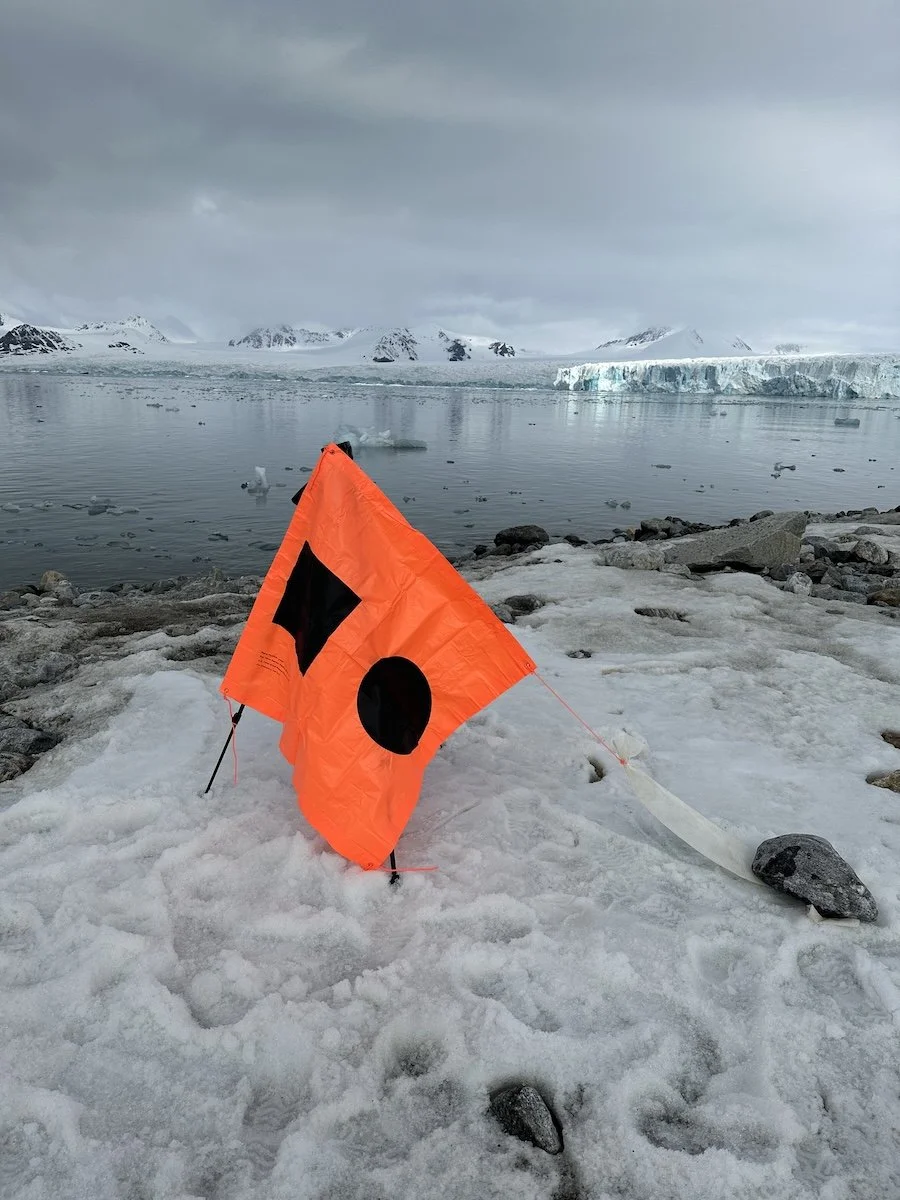Plastic, Fishing Buoy (collected near Isbukta, Spitzbergen, Svalbard Archipelago, Norway, 76°46.14’N, 016°58.06’E), Metal, Paper, Charcoal, 2024
Time becomes strangely odd at the poles. Earth’s surface rotation drastically slows down. The sun no longer appears to rise in the east and set in the west, seemingly hovering in almost the same position, resulting in continuous daylight throughout the summer or the reverse in winter.
Earth’s surface rotates at a faster speed at the Equator than it does at the poles. Earth is wider at the Equator, so to make a rotation in one 24-hour period, equatorial regions race nearly 1,600 kilometers (1,000 miles) per hour. Near the poles, Earth rotates at a sluggish 0.00008 kilometers (0.00005 miles) per hour.
A pendulum is a device made of a weight suspended from a pivot so that it can swing freely. The regular motion of pendulums was used for timekeeping and was the world's most accurate timekeeping technology for 270 years, until the 1930s.
The device was used in the seventeenth century to discover that Earth’s gravity varied slightly with location. A pendulum deployed in South America registered two and a half minutes slower per day than in Paris. “Isaac Newton in Principia Mathematica showed that this was because the Earth was not a true sphere but slightly oblate (flattened at the poles) from the effect of centrifugal force due to its rotation, causing gravity to increase with latitude.”
Once set into motion, a Foucault pendulum’s plane of swing seems to rotate approximately 360° clockwise per day at the North Pole. In actuality, the plane of the swing of the pendulum is staying more or less consistent, and the Earth is rotating counter clockwise below it. The rate of rotation depends on the latitude in which the pendulum is placed, with it showing no rotation at the equator.
Earth's rotation is a fundamental aspect of our climate system. Changes in the Arctic, particularly at the North Pole, due to climate change, not only underscore the rapid transformations in these regions but also highlight the interconnectedness of Earth's rotational dynamics and climate patterns. The melting of polar ice due to global warming contributes to sea level rise and affects the distribution of Earth's mass. This redistribution can cause minute changes in the Earth's rotation and the axial tilt.














































